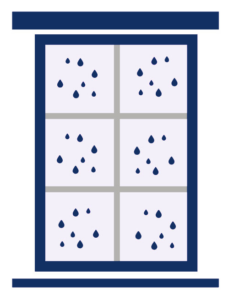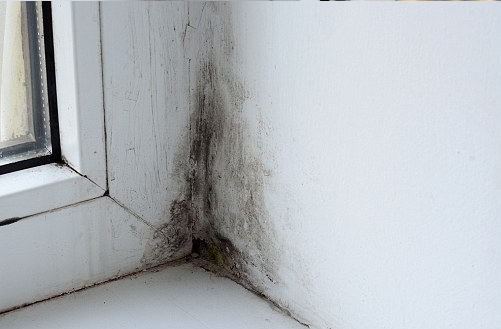Over many years, homes across the UK have struggled to battle against condensation in roof and loft spaces. What makes it more annoying is that this problem has become increasingly clear in the past two decades. One of the primary causes for this is our improvements in energy efficiency. Although our homes are airtight, which makes for warmer properties, this lack of ventilation increases humidity levels and, as a result, increases the risk of condensation. That said, older homes are more likely to have higher levels of condensation, so it’s always worth having suitable insulation and ventilation as a balance for each issue.
Although not harmful alone, it does lead to serious issues if it’s not dealt with as soon as possible, like wet and dry rot, mould and other problems hazardous to your health as well as your roof.
So, whether you’re looking for ways to prevent the issue in future or dealing with immediate condensation problems, we’ll help you understand with our guide.
Table of contents
- Stop condensation in the loft with these tips
- Why is there condensation in my loft?
- What causes condensation in the loft?
- Can I get rid of condensation in the loft permanently?
Stop condensation in the loft with these tips
It’s time to dry out that loft and reduce the risk of condensation. Here are some ways to do so.
Ventilation – keep the air flowing
That pesky, damp air won’t disappear when it’s nice and comfortable in the loft space. That’s why you need to make sure the air is flowing, which can be done in the following ways:
- Keeping vents (air vents, air bricks etc.) free from obstructions
- Minimising loft space usage by removing storage or boxes
- Installing more roof vents (check out our buyer’s guide to find out more)
You will also want to keep the air flowing during cooking, showering, bathing or when drying clothes indoors. An easy way of doing this is keeping windows open, especially if you have double glazing. Double-glazed windows make it more difficult for air to flow freely in and out of the property.
Another vital point of ventilation is the position of your furniture. Do not have this cosied up too close to your walls. Ensure a 100mm minimum gap between the furnishings and walls for air circulation. Air can linger and stagnate, leading your furniture to suffer from that horrible black mould.

Insulation – keep it airtight
During this stage, it’s worth considering insulating your loft hatch, too. Without suitable insulation, this can contribute to condensation, too. Insulate your loft hatch as a practical measure to minimise this problem.
Guttering – Keep it in peak condition
We have a guide to gutter repairs if you have the DIY skills to do so. However, if you’re not confident in doing these yourself, contact a professional to deal with the issue as soon as possible.
Air purification – Use a dehumidifier
Nowadays, dehumidifiers are used in many homes to remove water vapour from the air. They’re especially useful in lofts working as humidifiers. These are not as effective as extractor fans when it comes to reducing the smell, however, and do not circulate the air. So, it’s better to use one in enclosed spaces to prevent damp.
Decoration – Apply anti-condensation paint
Although anti-condensation paint might not sound like the sort of product you’d need in a loft, it is ideal for anyone who has converted a loft space into an additional room. It’s paint that reduces the risk of mould growth and prevents condensation. Nowadays there is an array of specialist paints that can be applied to clean, dry and debris-free surfaces like brick, render, block and plaster.
Why is there condensation in my loft?
Moisture loves humid spaces, meaning areas with warm, damp air. Places like:
- Above pipes
- Radiators
- Windows
- Cold walls
The air is released into the atmosphere without dispersing outside the property. Primarily, this issue is caused by poor ventilation since protection against water-laden air is not on the property. So, the air makes contact with cold surfaces (as listed above), condenses and releases moisture it holds onto the surface.

Is condensation in the loft a problem?
As we said, it’s not a problem in a minor state. However, letting it continue without care or maintenance leads to black mould. Particularly in these areas:
- Walls
- Ceilings
- Windows
This black mould can cause health problems, and those more sensitive to it should avoid it. You can check out the NHS website for more information about the more at-risk groups of people to check whether you or someone you know needs help with the removal.
You should also contact a professional if the black mould growth is excessive. If it’s small enough to remove yourself, you have the potential to do so.

What causes condensation in the loft?
So, we know the how, but what exactly causes it? Well, there are quite a few reasons.
Insulation
You may have noticed the appearance of condensation drips in the loft after insulating. If you’re confused since loft insulation should help support temperature, don’t worry, we’ll explain.
A simple explanation is many traditional homes with old insulation materials (e.g., fibreglass) or poorly fitted insulation can restrict the property’s ability to “breathe”.
The long explanation is adding insulation to the top floor rooms supplies warmth but also causes a cooling effect in the roof or attic space. The humid air moves through the insulation or gaps to enter the loft space. There, it hits the cool surfaces, creating beads of moisture on timber, lintels and the underside of the roof.
On top of this, if you have laid down new insulation in the loft, this may restrict the natural air circulation in the property. So, the loft is cooler than other parts of the home, creating the perfect place for humid air to deposit moisture on the surface.
Roof vents
Covered or blocked roof vents, once again, lead to poor ventilation. So, if you’ve placed storage boxes or other items in the loft, this might be a primary cause of the problem.
If you don’t have any roof vents, it’s time you had some installed – here’s why.
Hot water tanks
The steam and moist air from hot water tanks must go somewhere, but make sure that somewhere isn’t the loft. If it is, the condensation could be caused by that.
Look out for damages on the tank, too. Things like broken lids, defective thermostats or heating elements and more may likely be causing more issues than you realise.
Gutters and downpipes
If a gutter or downpipe is damaged, your walls on the outside of the house are at risk of cold and wet. This leads to leaks, which then leads to the problem of condensation.

General activities (Bathing, cooking and similar)
Taking a bath or cooking, where steam is likely to appear, can be more of a problem when you have a lack of ventilation. Steam combined with the lack of ventilation means moisture can grow excessively and rise to the loft.
Can I get rid of condensation in the loft permanently?
The most important thing to remember is condensation is a regular occurrence and more prominent when temperatures decrease. It typically clears up as temperatures rise, provided you have proper ventilation.
So, as long as it’s not persistent and you take the above measures to prevent it from becoming a big problem in future, it’s natural for condensation to occur now and then.
Too much condensation? Bring in the professionals
If the above tactics haven’t done their job and the problem remains or worsens, contact professional, accredited surveyors to investigate the issue. They can help diagnose the cause of the condensation and, in some cases, offer advice for treating it.
For tenants of properties, you may need to contact your landlord or housing association first to inform them you need professional support for the condensation in the loft.
Is condensation the least of your worries? Perhaps your property is suffering from dampness? Well, our damp proofing buyer’s guide has this and more to help you deal with this issue as soon as possible.






















